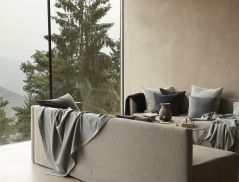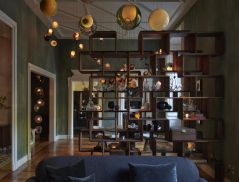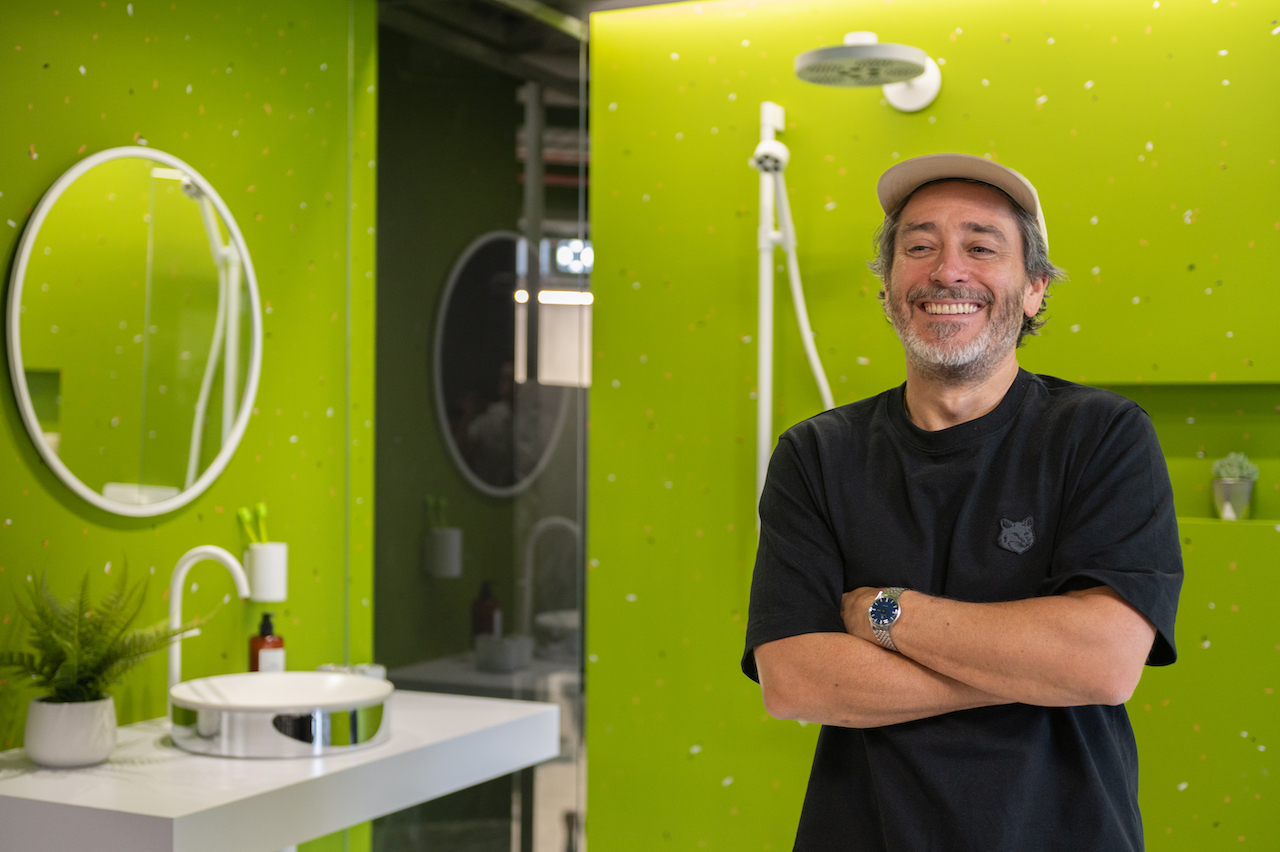
Jay Osgerby, the one part of London-based design studio Barber Osgerby, became friends with his business partner Edward Barber while studying at the Royal College of Art (RCA). The duo launched their eponymous studio right after their post-graduation in 1994.
Although they majored in industrial design and architecture, an artistic sensibility underscores all of Barber Osgerby’s works. “In the UK, we very much have an art school approach to design and architecture, so I actually started with fine art and sculpture, and then industrial design. And then finally I did a master's in architecture,” Osgerby shares. Sitting in Singapore’s The Water Studio by Hansgrohe amidst the AXOR One collection, the convergence of all those sensibilities is immediately evident. As is the fact that an artistic bent of mind is fundamental to the design process — in front of him are neatly folded wads of serviettes with design sketches that he drew over lunch. “I am always thinking,” he smiles with a shrug.
Osgerby shares about his work, the intuitive process behind the innovative one-touch interaction of AXOR One Collection and how he balances fine art with design.
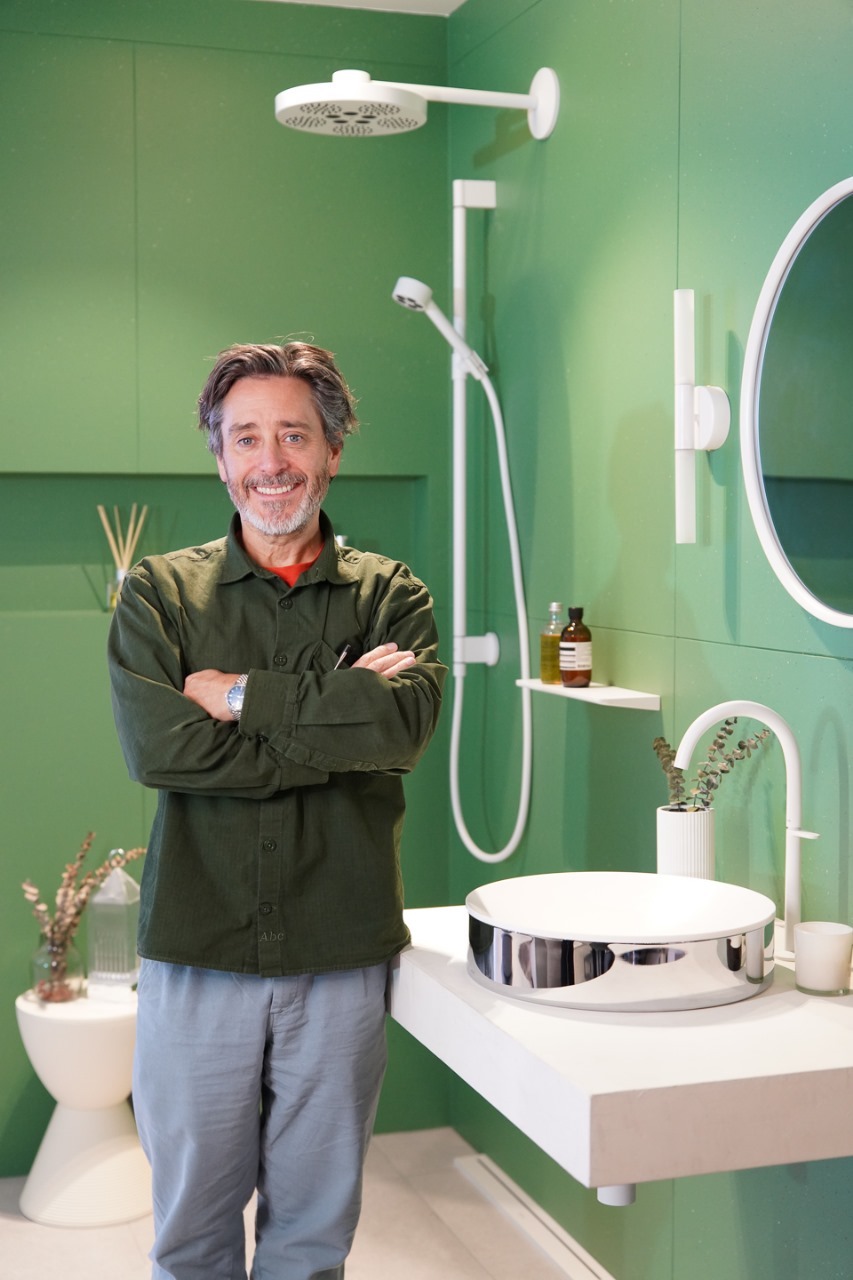
How would you describe your design ethos?
I don't think Edward and I really had an ethos or an agenda to begin with other than it was important to us to create, bring something new to the world, which was clearly authored by us. I think our work is actually pretty artistic and experimental. It's just a different approach, where we make eight things instead of 100,000, and work with craftsmen — smaller productions but higher value objects. What that allows us to do is research making techniques and find new ways of doing things.
At the moment, with the pressures that the planet is under, we would like to perhaps control things better to preserve a product’s longevity. We want to focus on something that people can use now, but even when they maybe want a change, the object itself can live on, in the secondary or tertiary market, or it can be handed down generations. It is very much like having kids — you don't have them just for a couple of years, they are for life. That's how I see product design; It’s the reason we work with AXOR. We want to work with people who think about the future, not just one turnover.
What is your design process? Tell us about the artistic conversations between you and Barber.
They are normally drawn discussions. Neither of us can use computer-aided design, because we are too old, we missed the computer years. So the way we talk about things is through sketching. When you draw something it's open for interpretation because it's not finished. We both might see it slightly differently, but through talking and sketching we will arrive at something, which we both agree on. We work with some very great designers in your studio, so then they come in and add to the idea before we start to make small paper models of the product. I always describe it as starting a fire that builds and grows as you put more into it. It is very much how the energy and enthusiasm of people helps kindling an idea.
When you design for bathrooms, is your thought process a little different?
For me, the bathroom is as important as any other room in the home, probably even more so because it's the one place in the house where you can close the door and just have a moment to yourself. There's also a great deal of responsibility to work with water because it's a scarce resource. That’s the reason we approached AXOR out of all the companies in the world, because they have the best engineering capabilities and invest highly in research and development to make the best product.
To some extent, designing bathrooms is similar to lighting design, because it integrates with architecture. For AXOR One Collection especially, it was easier to design what happens behind the wall for the plumber and the installer, because as architects, we knew how the wall was made.
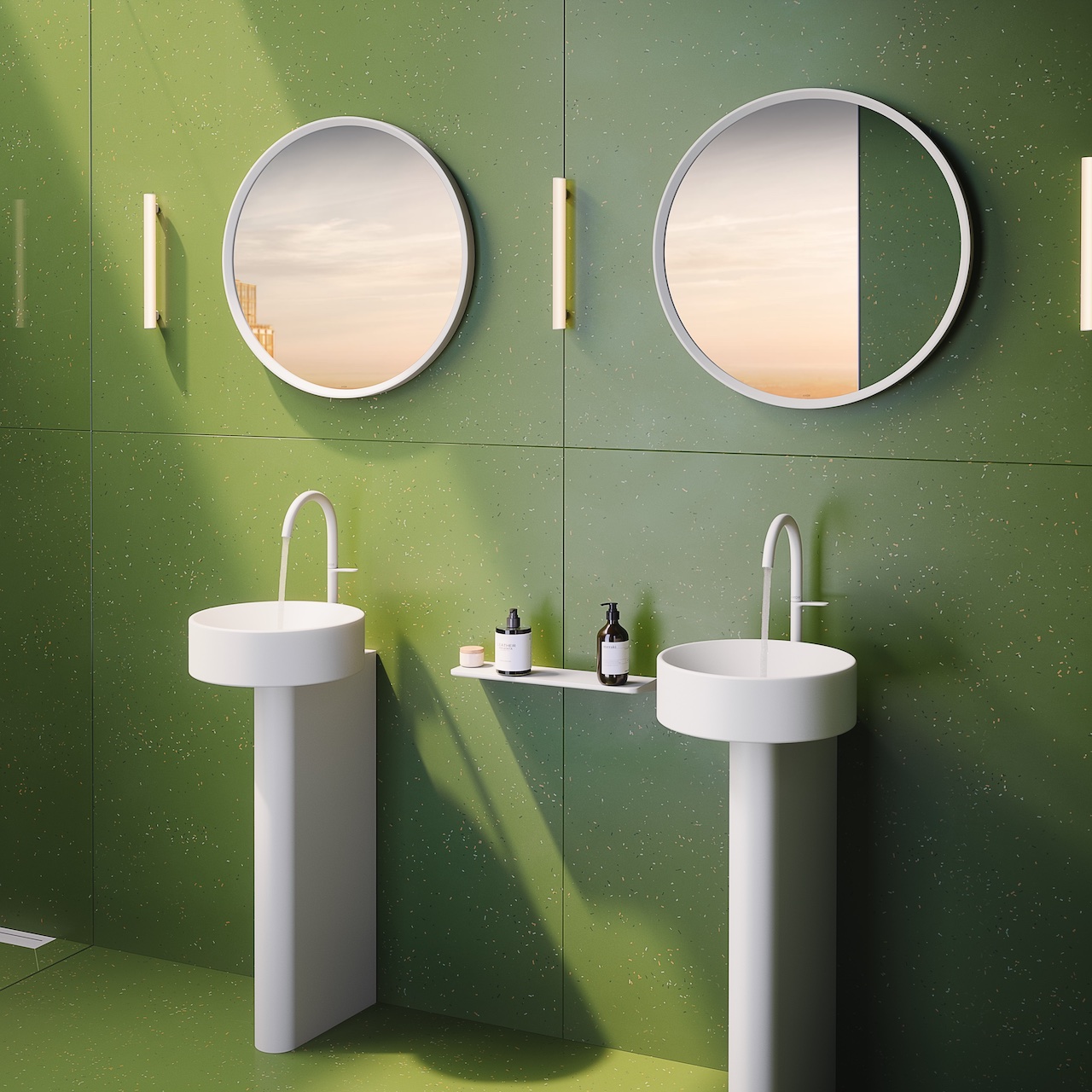
Tell us about your work process with AXOR
It’s one that takes a few years to come to fruition. It takes a few minutes to have a concept; the engineers then take a few more minutes to discuss among themselves on the possibilities — they never say no, though. A few months go into refining the aesthetics and 18 months for engineering. Then, when it's finished, it is tested in the homes of its employees and friends of the company for 12 months. AXOR will not release a product into the market unless it passes that trial process with 100% positive results. For us as designers, the wait can seem a bit frustrating, but we have the unique opportunity to create a product that creates a better interaction with water through a manufacturer who shares the responsibility to deliver it in the best possible way, guaranteed to last for 20 years at least.
How did the AXOR One Collection come about?
The collection is a new invention, where we have removed the taps and hidden all the mechanisms under the wash basin — and that leaves us with just the archetype and the interaction.
It started actually with another product before this; a shower controller that one would typically find in any high-end hotel. As business travellers, we could relate with the all too familiar experience of waking up with jet-lag and confronted with a shower console with a complex set of controls and trying to figure out what each does. So we had this idea of bringing all of that complexity into one central place of control clearly marked with an icon. The positioning of the cartridge underneath the wash basin also simplified it very much from a plumbing point of view.
What’s special about the AXOR One Matt White?
We just knew that white, especially the Matt White is the most essential version of what we wanted to create, because it's not about any colour or shine. There's always been this tradition of patronising the luxury end of the market, because the assumption is that people understand luxury only if it’s glitter and gold. I don't think that's true. I think people understand the power of simplicity — a Jil Sander as against a Versace. This product is actually the fastest selling new product that AXOR has ever had. It's because it is simple and elegant, it's just purity.
The hard thing though, was creating the actual finish. The paint utilises aerospace technology — it’s a hard wearing powder coat, which is high temperature and high engineering performance, as you'd expect from AXOR. So it took a lot of research.
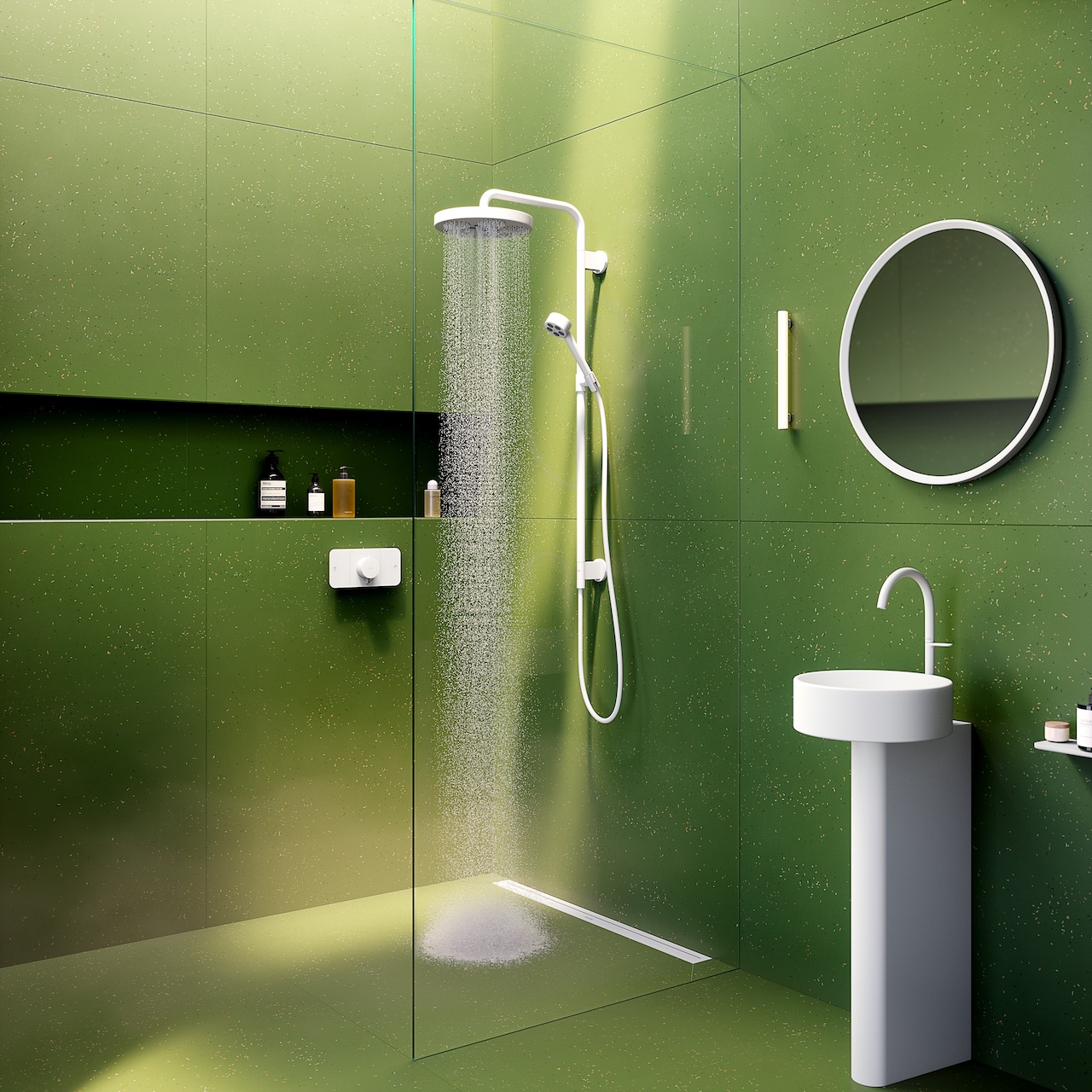
Do you have any colours that you like to work with?
Greens, complex colours and tertiaries. I do sometimes go for crazy colours. I actually quite like yellow. I love orange — it’s so cheerful — and probably our biggest colour. I wear a lot of blue — navy is classically British — but it’s a really tricky colour for products because it makes it feel quite serious.
Where do you gain inspiration from?
Junk. I do a lot of photography, but I am crazy about junk. I really like going to flea markets, because you can learn so much about the culture of a place by what they use. For example, almost every culture in the world has spoons. How people from different places may experience it is so fascinating to me — the material selection hints on what’s available, the shape, perhaps the type of food that’s popular, the viscosity of soups and the like. However, I have recently realised that I can't concentrate on the stuff if I have my camera with me, because it’s two very different ways of seeing things. When you are taking a photograph, you receive in a passive way, it's a fine art brain, which is not really analytical. However, when confronted with junk, it’s like opening up to a very cerebral experience.
How would you describe yourself?
The three things that I think I am are: An artist, designer and entrepreneur. Unless you are very wealthy, you can’t be an artist. You can be a designer if you are entrepreneurial, and if you are successful as an entrepreneur you can then be an artist. I come from a very poor working class background, and went through state education. I started the studio with my business partner with some money we borrowed from his grandmother. But by being entrepreneurial and applying design thinking to business, we managed to get to a point where we can now do more artistic stuff.


 Share
Share


